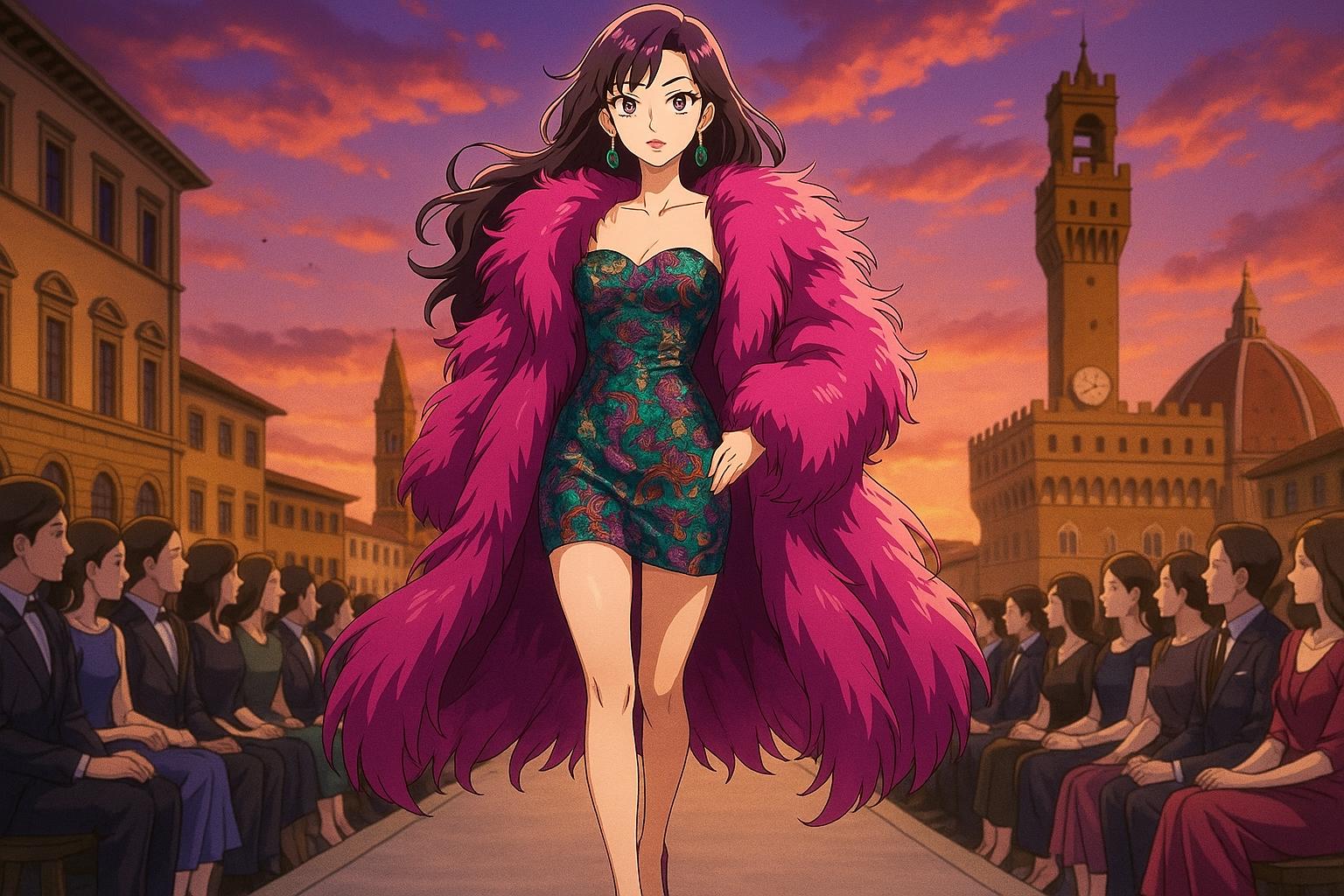If rebirth is what you seek, then few places embody that theme as strongly as Florence, a city synonymous with the Renaissance. This historical backdrop set the stage for Gucci’s latest collection, which debuted against a dramatic tapestry of artistic heritage and modern ambition. Following a challenging period marked by significant financial declines—24% in the last quarter of 2024 and 25% in the initial quarter of 2025—Gucci showcased its collection in an eye-catching catwalk event starting at the 15th-century Palazzo Settimanni. Celebrities such as Paul Mescal and Viola Davis graced the front row, while locals and fashion aficionados observed from nearby bars and cafés, creating a vibrant atmosphere that transcended mere runway.
The decision to hold an outdoor event was fraught with risk; preceding thunderstorms had left the fashion house uneasy. Yet, as the clouds parted to reveal a quintessentially Tuscan sunset, it seemed fortune might smile upon Gucci, a brand striving to reclaim its former glory. The collection featured bold pieces that paid homage to Gucci’s historic identity—think jewel-toned brocade dresses and exaggerated faux-fur chubbies reminiscent of glamorous 1960s jet setters—while nodding to the contemporary influence of incoming creative director Demna Gvasalia, the controversial figure from Balenciaga.
Demna’s recent arrival at Gucci comes on the heels of Sabato De Sarno’s abrupt departure just weeks before Milan Fashion Week. Under De Sarno, Gucci had aimed for a minimalist aesthetic, but sales suffered amid a wider crisis in luxury consumption globally. According to Bain & Company, luxury goods sales are projected to decline between 2% and 5% in 2025, a significant downward adjustment from anticipated growth, driven by various factors including economic pressures and a fatigued consumer base. This turbulence reflects the broader context within which Gucci must navigate its revitalisation.
With the luxury sector facing mounting challenges, Kering, Gucci’s parent company, is also contending with declining demand in critical markets such as the United States and China. CEO François-Henri Pinault has noted that the downturn has persisted sharply, impacting overall financial performance. In the first quarter of 2025, Kering reported a steep 14% year-on-year decline in sales, with Gucci alone seeing a staggering 25% drop in revenue, rendering it increasingly urgent for the brand to rekindle interest among luxury shoppers.
Gucci’s pivot towards a more audacious aesthetic, reflected in the latest collection, signals a calculated risk designed to draw upon the successes of its past. Historical moments such as Tom Ford’s reinvention of the brand in the 1990s and Alessandro Michele’s innovative era highlighted the need for boldness to lead Gucci back into profitability. Demna has a reputation for disruption, known for his innovative, albeit polarising, approach to design, which has included unconventional marketing tactics and controversial product lines.
The atmosphere surrounding Gucci is one of cautious optimism. Kering’s deputy CEO, Francesca Bellettini, has expressed confidence in Demna's approach, asserting that his contributions will build upon the brand's existing legacy rather than overhaul it entirely. This shift has sparked renewed interest from other creatives eager to join the Gucci team, suggesting a reinvigoration of its internal culture alongside external brand rejuvenation.
Ultimately, Gucci's fortunes may hinge significantly on how well it can integrate its storied heritage with a contemporary vision that resonates with today’s consumer. As the sun set over Florence's iconic landscape, the brand finds itself at a crossroads, poised to either rekindle its lustre or face further challenges in an already turbulent luxury market.
Reference Map
- Paragraph 1: (1)
- Paragraph 2: (1), (2)
- Paragraph 3: (3), (4)
- Paragraph 4: (5)
- Paragraph 5: (6)
- Paragraph 6: (3), (4)
- Paragraph 7: (1), (6)
Source: Noah Wire Services
